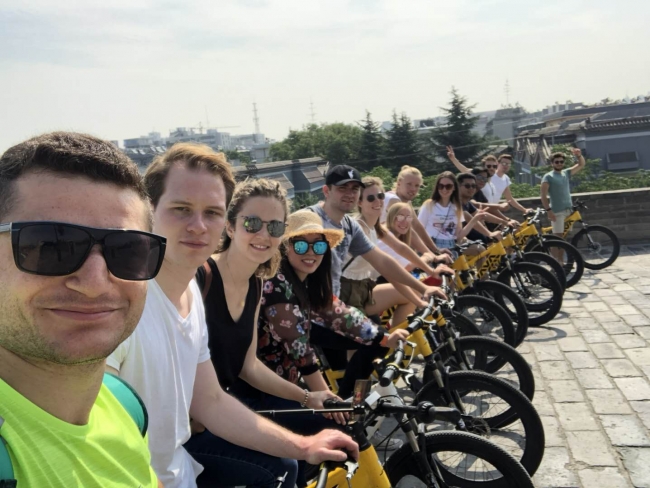记毕业旅行第一站——陕西
ADIYASUREN ANGARAG 蒙古 测绘学院
这是我第一次到陕西旅行,陕西也是这几年一直向往的一个神秘地方。我非常高兴能够参加这次活动。我们从上海出发到了渭南市,渭南市是陕西东部一个新兴的中等城市,地处关中平原东部最阔地带,是陕西的“东大门”。渭南气候属于暖温带半湿润半干燥,地处黄,渭,洛三河交汇,土地肥沃,是中国西北最优越的农业生态区。到了陕西第一天我们去参观了韩城的党家村,以前韩城被称为“小北京”,而党家村因农商经济发达则又称为“小韩城”。党家村是历史文化名城,坐落于东西走向的泌水河谷北测,所处地段呈葫芦形状。党家村主要有党,贾两族,400户家人,约600多年历史。
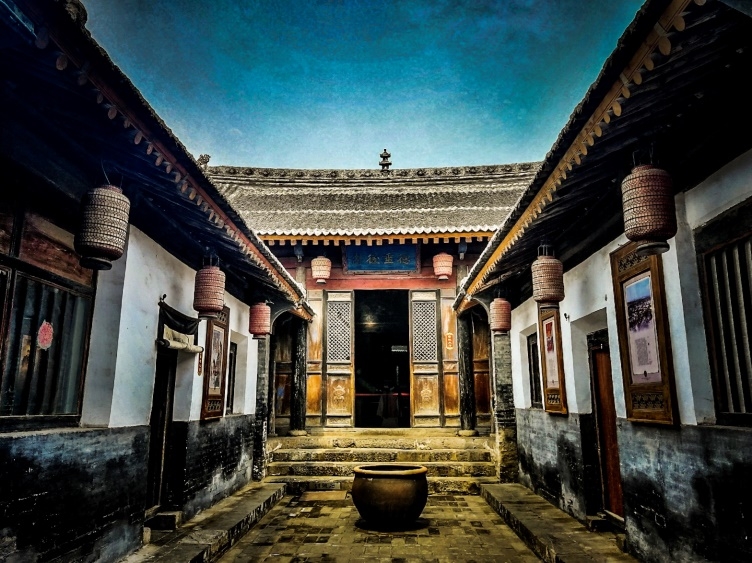
东方建筑文化在中国,中国居民文化在韩城
陕西省作为丝绸之路的起点应有尽有,那么旅行过程中最重要的一部分是当地的传统美食。我们在合阳一条美食街吃了午饭,最好玩的是每两个人中间100块的一卡通,整条街上我们自己沟通选择自己的饭。陕西的特色就是面食大街上的面馆比饭馆多,据当地人说,仅陕西的面食就有50多种。而且陕西面食把每一种面都做的与众不同,都赋予了深厚的文化,就像陕西的历史一样。其中最有名的便是岐山臊子面与油泼面以及biangbiang面了。在上海的面馆中随处可见油泼面,油泼面是在周代礼面的基础上发展而来,秦汉称汤饼,隋唐叫长命面,下入锅内久煮不断,宋元称水滑面。油泼面最早在案板街,炭市街经营,西安很普遍。手工擀制又粗又宽面条,开水中煮熟后捞在碗里,配上葱花、肉丝、花椒粉、盐面配料,撒厚厚的辣椒面,顿时满碗红光。除了面食外,肉夹馍是我觉得最好吃的小吃,这也是在上海生活了五年,吃了五年西安肉夹馍的自己第一次吃到最正宗的肉夹馍,好吃而且感动。也许,吃到正宗的陕西美食就像在感受陕西的文化一样。
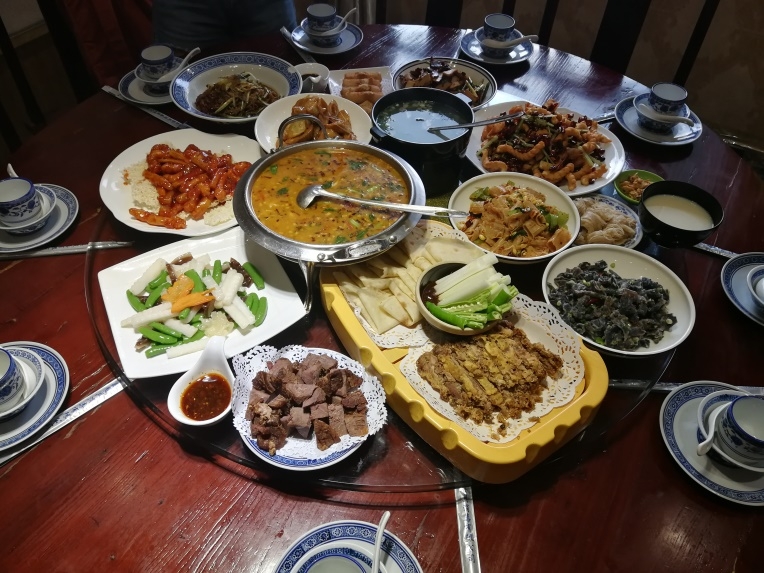
陕西美食
陕西省位于中国内陆腹地,秦岭横亘其中,八水环绕,自然景观优美。西安古城长安,是西北地区第一大城市。西安历史悠久,是中国古代历史上建都朝代最多,时间最长的都城,具有7000多年文明史。西安最大特点是,历史文物和名胜古迹,其中最有名的就是秦始皇兵马俑博物馆,这也是很多外国人向往的景观,这次我最期待的也是去看兵马俑。博物馆目前开发有三大俑坑,三座俑坑面积达2万多平方米,内有车兵,骑兵,土兵等不同的兵种,还有陶马近8000多件,排列整齐有序。陶俑的形象各不相同,平均身高一米八左右,阵队面东而立。当看到那些气势磅礴的军阵终于明白为什么秦兵马俑会被列为世界第八大奇迹!军阵一望无际,每个坑都笔直站满了秦勇,头戴冠冕的,面布胡须的,眼神凌厉的各个神态不一,可谓栩栩如生,千人千面。很难想象古人如何做到这般精雕细刻巧夺天工。现在我们所看到的兵马俑是地下五米深的位置,地宫在地下三十米深,还末开发,由于现在的科学技术,无法完好保护出士文物。兵马俑出土的时候,几乎都是碎片,经过研究人员的刻苦工作才能拼凑粘贴出一个。虽然在博物馆里人山人海,但我们运气很好!因为我亲眼看到了里面有很多员工在测量做实验,而自己所学专业便是测绘,而且导游说他们不是每天在这里工作的,所以我特别开心。兵马俑具有很神秘的历史,具有特别大的建设规模,到现在人类还没找到这神秘地方的结点。
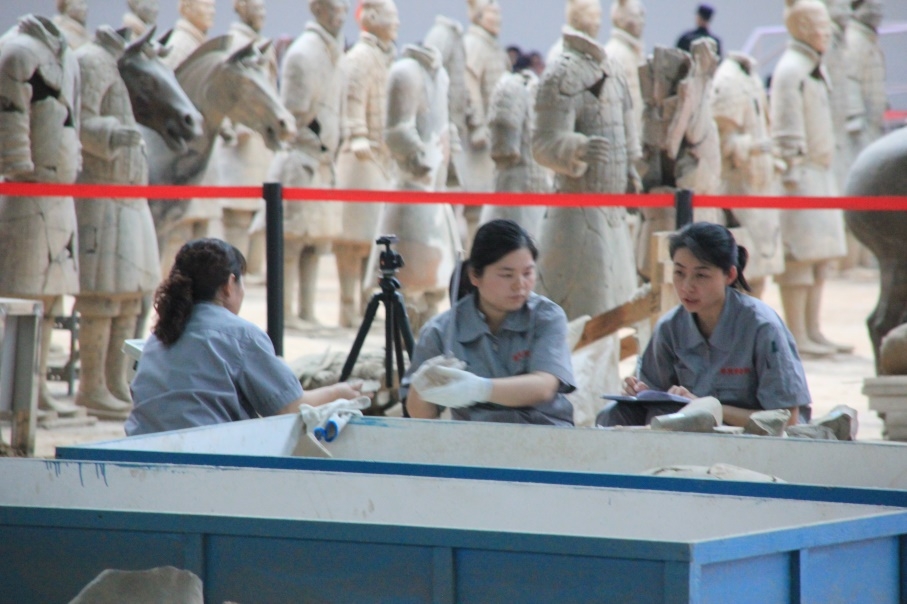
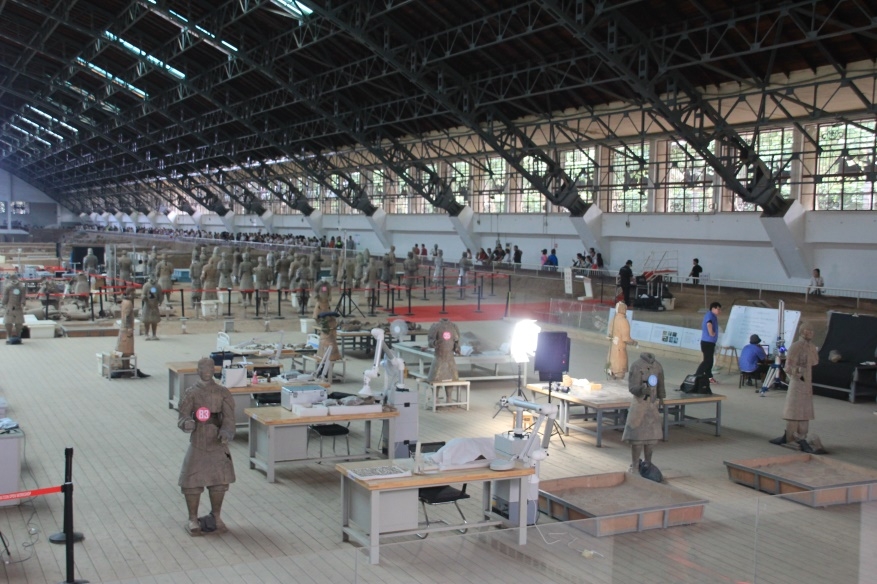
秦始皇兵马俑博物馆
唐大明宫是中国古代最为宏伟和最大的宫殿,同时也是世界史上最宏伟最大的宫殿建筑之一。大明宫面积约3.2平方公里,周长约7.6公里,比北京故宫大四倍,也是曾经东京的小模型。我们参观了新建成的大明宫的模型,是对我来说非常难得的机会。
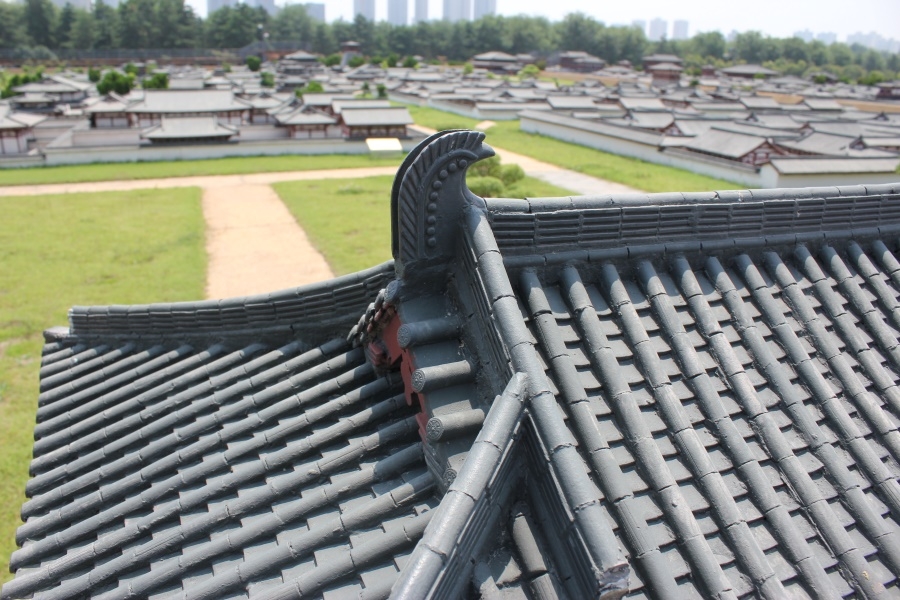
大明宫模型
若要感受中华大地的千年历史与文明,西安是不得不去的城市。正好此次目的地便是西安,才有幸和这座千年古都相遇。一到晚上整个西安城便闪闪发光,变得更美更活泼,古老文明与现代城市的美感交汇与万千变化的灯光中。西安具有目前规模最大的,保存最好的明代城墙,市中心的钟楼和鼓楼因古代放置大钟和大鼓而得名,也是西安的标志性建筑。城墙已有630多年的历史,高12米,由于古代没有如今的高楼大厦,均是一楼或者二楼平房,所以在古代,站在城墙能看到整个长安市。虽然现在站在钟楼上不能俯瞰西安全城,但这丝毫没有减少自己对于西安这座城市美的感受。
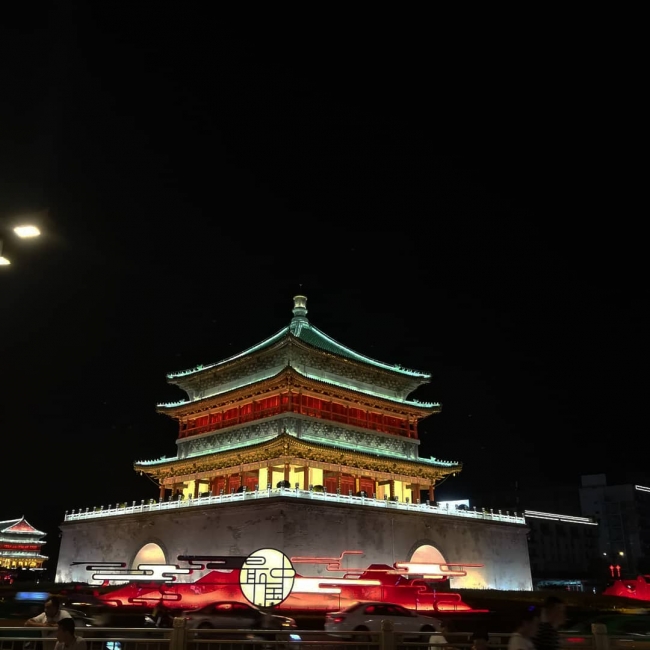
西安夜景钟楼
很多人知道,上海的马拉松被称为“上马”,北京的马拉松被称为“北马”,但很多人不知道的是,而西安的马拉松不是“西马”而是“城马”,这是因为西安的马拉松是在城墙上跑步的。虽然我们这次没有像跑城马一样在城墙上跑步,但有机会在城墙上骑自行车,而且一次骑了15km,这对于我来说也是很有意义的一个挑战与尝试。
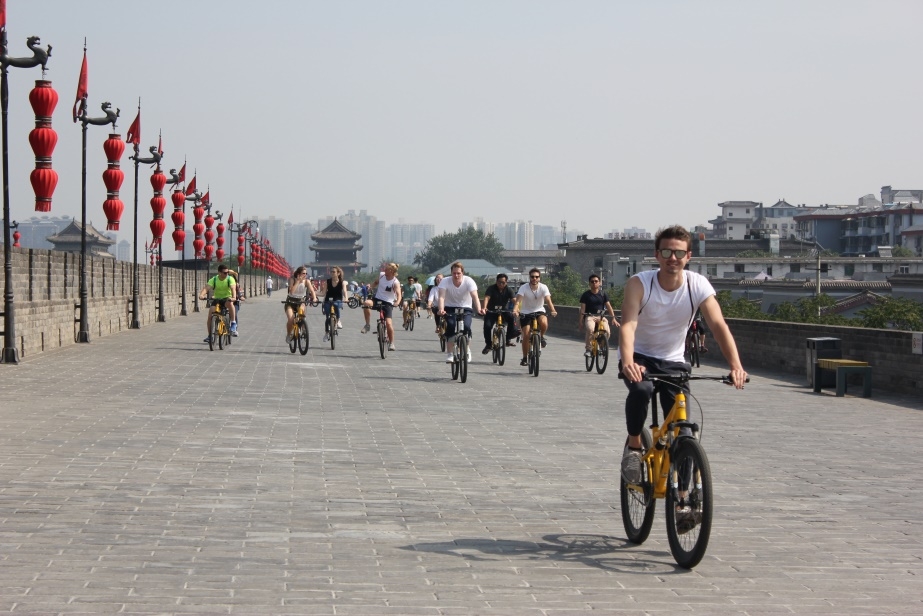
西安城墙
在此特别感谢我们导游,在高温炎热的天气中给我们讲解每个细节背后的故事,这样敬业的精神值得我学习。因为自己也在家乡考了导游证,所以这次旅行,除了参观,在关于如何做好一名导游方面也学到了很多。最后要感谢留学生办公室老师,给我们安排这次去陕西的活动,短短的5天内让我更深刻的了解了中国的历史与文化,增加了我的学习动力。最后,心底由衷感谢吕校长邀请我们去参观渭南。
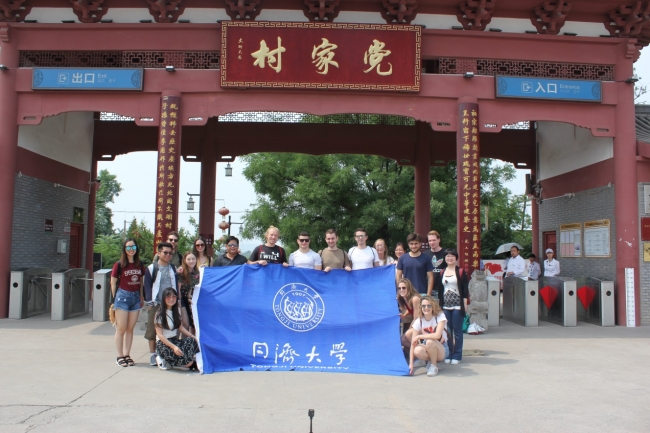
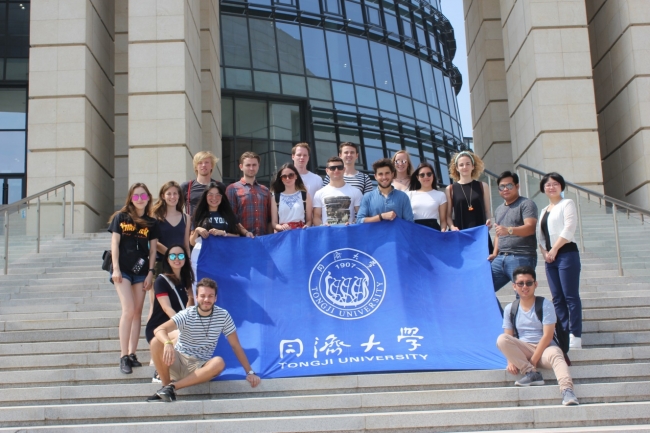
Report of Trip to Shaanxi
ZORN DENNIS GERMANY CDKH
Trip to陕西 (Shaanxi)
Organized by the International Students Office of Tongji University, the trip took around 20 international students from six different countries to one of China's most traditional areas.
On the recommendation of the Vice President of Tongji University, Prof. LYU Peiming, half of the trip was spent in the rather small but steadily growing metropolis 渭南 Weinan, before the other half was spent in the former, ancient capital of China 西安 Xi'an.
Day 1
The excursion started punctually at 9 a.m. with breakfast already prepared for all students. A bus took us from Siping campus to Shanghai Hongqiao station, from where our journey to Weinan started in about six hours in a comfortable express train.
On arrival, our tour guide, who provided us with information about the stations for the following days, greeted us and brought us to the hotel.
The evening ended with a foretaste of typical provincial food, most of which can be summed up as „spicy „for the European taste.
DAY 2
Activities around Weinan were planned for this day. The first stop was Dang village. It is the largest, oldest and best-preserved stockade village. It was mainly inhabited by people with the surnames Dang and Jia, with Dang being the oldest inhabitants. The village was built in 1331 and reached its peaks in the Ming and Qing Dynasties. Due to the excellent conservation, the life of the people at the heyday of the village can be well imagined.
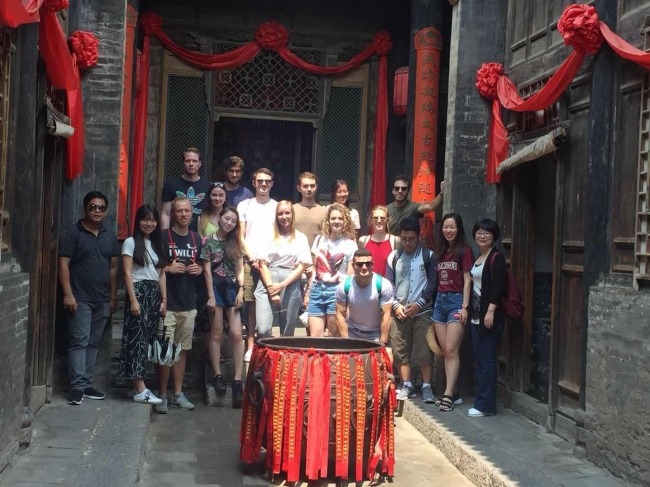
For lunch, we were taken to a plaza with many different stalls where you could enjoy different local dishes. The place had a nice street food ambience typical for the area. The famous 肉夹馍 was particularly tasty. This dish is also known as Chinese hamburger.
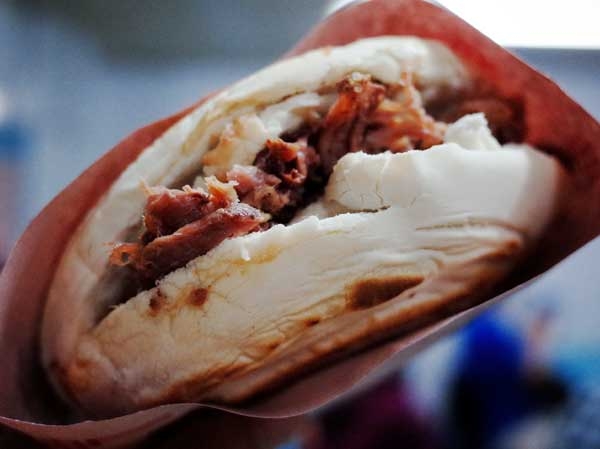
The last stop in the Weinan area was the Hechuan Parkland. There we took a boat to a hot spring, where we rested for a short cooling off. After that, we walked over the lotus fields and enjoyed the moor-like landscape, which lay in the valley of beautiful mountains, before we went back to the hotel.
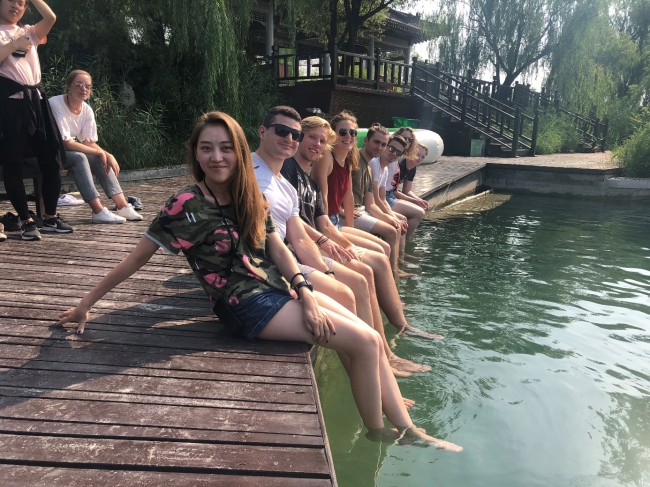
Day 3
After an extensive breakfast, we went to the Museum of Weinan, where various relics were exhibited. In addition, several Chinese exchange students from Weinan Normal University were present for intercultural exchange. In the museum, we watched various musical performances, including fascinating shadow plays and an impressive puppet show.
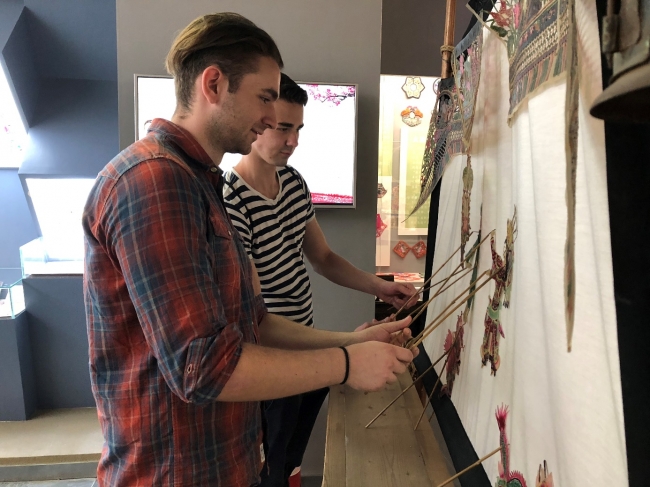
Since Professor LYU Peiming, Vice Mayor of Weinan and Vice President of Tongji University made the recommendation and he also made the time to meet us. We would like to take this opportunity to thank Prof. LYU Peiming again! 谢谢!
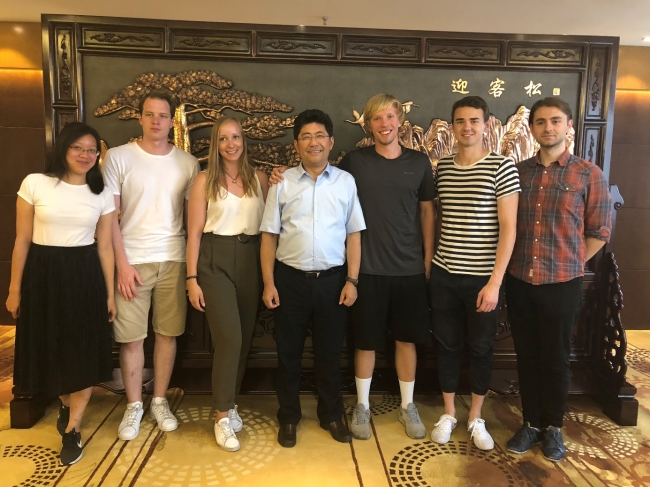
The stop scheduled for the afternoon led us to the mausoleum of Qin Shi Huang. What is special about the mausoleum are the terracotta warriors, each of which is different in size and shape. Work on the mausoleum began in 246 B.C., so that the colours of the warriors have unfortunately faded away in the meantime. Local farmers discovered the first figures of the Terracotta army in 1974. Altogether four pits were discovered, of which only three are filled with warriors. Estimates put the number of warriors in the pits at over 8000.
The discovery is very remarkable, which unfortunately the exhibition does not do justice to, since it is very full and hardly possible to examine the individual figures.
After the exhibition and a delicious meal in Xi'an, the evening ended in a beautiful hotel.
Day 4
The penultimate day was spend after a restful sleep and rich breakfast with the learning of a traditional drum dance, which looks simple, but required a quite high degree of coordination. Many other Chinese for various dances, which made learning the dance a unique experience, also use the square in the palace. The pictures and the video speak volumes here.

To give a little insight into life in the palace, we watched a short film about a romance that took place during the Tang Dynasty. Afterwards we visited the Daming Palace in Xi'an. The palace belonged to the Tang Dynasty and was used as a royal residence for 220 years. The palace has been declared a Chinese cultural heritage. Since the condition of the palace is less well preserved and was discovered in the 1960s, a miniature of the original palace was created. Here you can get a better idea of the beauty of the palace at that time.
There was something special about lunch. All food delivered was vegetarian. With tofu and the use of seasonings, hardly any difference to the typical Chinese non-vegetarian food was noticed. Yummy!
The evening programme was self-determined, but the students exchanged ideas and decided to take a look at the Muslim Road together. There many Muslim dishes could be enjoyed and so the evening could end.

Day 5
The last day of the trip was used by a bicycle ride on the largest city wall of China. On the 14 km long tour the city could be visited again and discovered that Xi'an lies between tradition and modernity. In the bright sunshine, the last day was used to get a last overview of the city before we went back to Shanghai by express train.
All in all, the trip was a unique experience. The trip was very well organized and everything was planned. The arrangement between management and students worked great and it was great fun for all students. All CDHK students thank for a great organization and an experience to look back on for a lifetime! Thanks!
